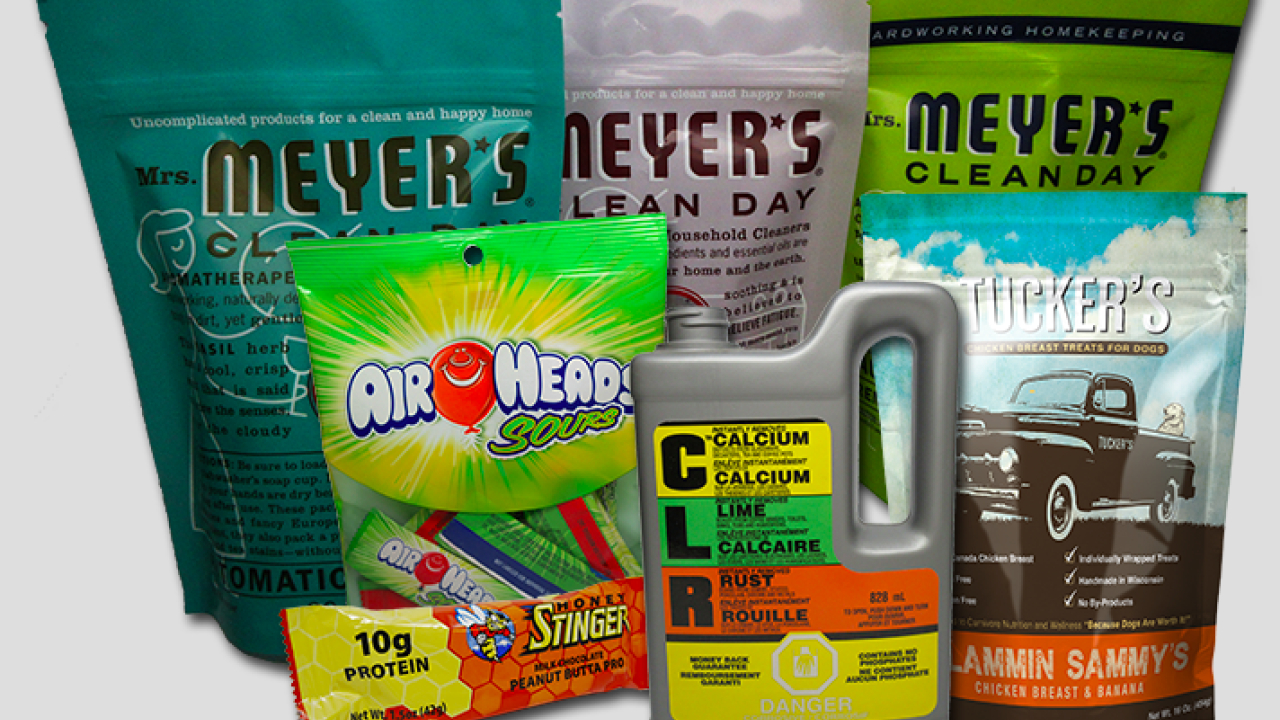Workflow automation drives EskoWorld agenda

Over the last two decades Esko has established a key position as workflow integrator between brands, converters and suppliers, establishing links between brand color management, pack specification, pre-press and workflows onto both digital and conventional presses, closing the loop with automated quality assurance systems. It has achieved this by establishing links with a wide range of partners across the value chain, many of whom were present at EskoWorld to talk about roadmaps to an automated, Industry 4.0-driven future.
Speaking at a press conference, Esko president Mattias Bystrom said changes in the wider retail landscape – particularly the growing success of ‘challenger’ brands – are already affecting Esko’s development strategy.
‘We see more design being done by people with no idea of color, and smaller brands are rising which are experts in their own products but whose knowledge of packaging is quite limited. And there are competitors out there offering “quick and easy” print results, so we need to make the case for why professional solutions are required.’
Bystrom said that packaging components that are changing in the search for more sustainable products. ‘We see end users asking for recycled and recyclable packaging, and solvent-free inks, but with the same performance characteristics.’
How will these factors impact pre-press professionals? ‘We need to find automated ways to avoid errors in submitted artwork and mitigate time pressures, while we wrestle with unclear communications and cope with the new demands for physical materials.’
Esko’s survey results, quoted by Bystrom, show that 71 percent of consumers trust the information they read on packaging, in contrast to a lack of trust in other media sources. ‘We must safeguard this trust, so we should not leave this to untried software.’
New products and workflows
Automation roadmap. With Automation Engine 18.1 announced at the event, Esko estimates that 45 percent of pre-press and preproduction tasks can be automated with
existing technology. Automation Engine’s scalable workflow is already at the heart of a range of automation initiatives with OEM partners. One example in the label sector is the integration of Automation Engine and sister company X-Rite’s ColorCert with AVT’s AutoSet in-line print inspection system to automate color inspection and measurement, launched at Labelexpo Europe. The digital link between ColorCert color and AVT’s Spectralab in-line color measurement device automatically sets up a job for in-line color measurement and generates color scorecard reporting on color quality performance after printing. This integration delivers better visibility into color performance based on measurable, objective results for increased color consistency.
ArtPro+ addresses PDF concerns
Esko acknowledges the increasing usage of PDFs by packaging professionals, and the latest release of ArtPro+ is designed to support pre-press operations going through that transition phase.
Frank Woltering, product manager at Esko, noted that PDF editing, a ‘critical stage’ in the pre-press process, ‘is known for introducing errors that create waste downstream.’
ArtPro+ opens any classic ArtPro file or normalized PDF file and turns it into native PDF. Crucial production metadata, such as barcode properties, screening or ink information, is translated into the latest PDF ISO specifications, and both the graphical content and packaging relevant metadata are migrated.
Another enhancement is in Esko’s non-destructive warp system, which compensates for distortions in the packaging production process. Warping grids created in ArtPro and PackEdge are now fully protected by ArtPro+, meaning any PackEdge or ArtPro grids can be used in ArtPro+ for warping new designs. Esko says the new algorithms create higher quality pre‑deformation allowing for design changes even after the warping process.
Smart preflight profiles have been enhanced with dedicated layers to prevent conflicts between the design and technical information – avoiding knocking out die lines, for example. Another key feature is a patent-pending object-based trapping algorithm.
EskoWorld coincided with the announcement that the company’s Print Control Wizard was shortlisted for the Innovation award at the Labelexpo Label Industry Global Awards. Print Control Wizard offers a standardized approach to screen and curve creation, outputting a new Crystal Screening algorithm to address a wide range of potential print issues.
As Esko product manager Robert Bruce explained: ‘Vignettes are smoother with no inflection points or bridging and there is also a considerable reduction in plate cleaning frequency. Increased stability and predictable results on press are a clear enabler for flexo printers to move to fixed palette printing, leading to increased productivity and press uptime.’
At Labelexpo Print Control Wizard was shown for the first time driving the Esko CDI Crystal 4835 XPS flexo imager with PlateHandler.
Cloud connections. Cloud connectivity is a major focus for Esko’s development roadmap. The company’s private cloud infrastructure built for its software applications is already delivering benefits, as Jan de Roeck emphasized. ‘Cloud computing delivers savings and benefits in supporting IT functions, a business domain where many converters suffer from scarcity of skilled resources as well as scalable and up-to-date equipment. Applications that run as a service in the cloud don’t require an expensive IT infrastructure and software updates no longer need the dedicated attention of an IT engineer.’
A great example is the recently released Share & Approve proof approval tool, which runs as a service on Esko Cloud and enables anyone in the label workflow to upload, share, annotate and approve packaging and label jobs in 2D and ‘hyper-realistic’ 3D.
‘Share & Approve is an application which makes use of the Cloud to enable any user to invite an external party to review and approve a job,’ explained de Roeck. ‘And now also Automation Engine makes use of the Esko Cloud. For customers, this means it has just become significantly easier to use expert skills like 3D artists – even if they are residing at a remote facility – or to easily move jobs to another site in an effort to balance workload.’
Esko is developing a series of ‘Cloud connectors’, which hook its applications into the Cloud infrastructure – a recent example being the Automation Engine Cloud Connector. ‘We will continue unlocking more applications that run as services in a cloud infrastructure and releasing additional “cloud connectors” for software and hardware tools, and in this way effectively connecting the labeling ecosystem,’ said de Roeck.
Esko’s commitment to driving automation through its extensive range of OEM partners was also emphasized by de Roeck. At Labelexpo Europe, for example, Esko was co-operating directly with a diverse group of suppliers including Cerm, Codimag, Dantex, DuPont, Epson, GlobalVision, HP Indigo, Label Traxx, MacDermid, Mark Andy, MPS, Omet, Sun Chemical, The Gray Elephant, Theurer, Vianord, X-Rite Pantone.
Technology sessions
EskoWorld includes a wide range of deep dive workshops on specific products, and this year’s event was no exception. Some standout sessions this year included:
• Grey Elephant’s Brain4Tools. This software package optimizes organization of print tooling. Where the printing sequence is usually determined manually by evaluating individual separations, Brain4Tools compares print sheets with existing printed separations/tool combinations and generates an optimal print sequence in under a minute.
• End user seminars. These included Kevin Ford of Miller Coors talking about building a connected culture throughout the brand; Anne Samoyedny of Pepsico talking about packaging management best practice; Frank Goddiess of Colgate-Palmolive on the company’s experience switching to Web Center for the artwork process and user feedback; and Angela Clinefelter at Kimberly Clark explaining how a print quality program was set up using X-Rite’s ColorCert.
• Customer presentations. These included Turner Labels’ Kristen Estep giving designers advice on factors to take into consideration including brand identity (strategy), brief (communication), research (What’s new, what’s used?) and functionality.
• Flexo screening/RIP roadmap. This session looked in detail at how different combinations of amplitude modulated and randomized screening can be used to obtain different print effects such as apparent fades to zero.
• G7 for Flexo. Esko’s flexo expert Mark Samworth presented on the current status of G7 certification, explaining the technical details behind G7 Grayscale, G7 Targeted and G7 Color Space, as well as how the standard relates to both digital and offset.
Stay up to date
Subscribe to the free Label News newsletter and receive the latest content every week. We'll never share your email address.


